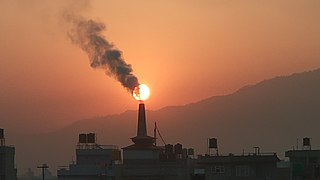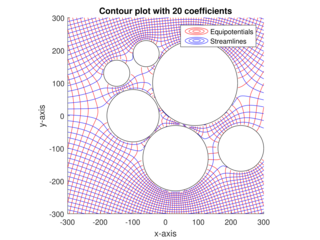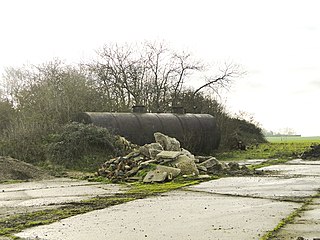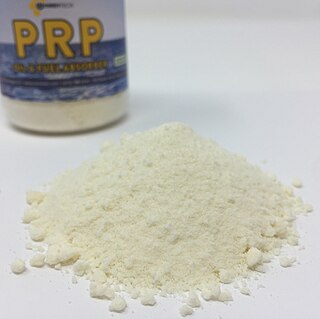
Environmental remediation is the cleanup of hazardous substances dealing with the removal, treatment and containment of pollution or contaminants from environmental media such as soil, groundwater, sediment. Remediation may be required by regulations before development of land revitalization projects. Developers who agree to voluntary cleanup may be offered incentives under state or municipal programs like New York State's Brownfield Cleanup Program. If remediation is done by removal the waste materials are simply transported off-site for disposal at another location. The waste material can also be contained by physical barriers like slurry walls. The use of slurry walls is well-established in the construction industry. The application of (low) pressure grouting, used to mitigate soil liquefaction risks in San Francisco and other earthquake zones, has achieved mixed results in field tests to create barriers, and site-specific results depend upon many variable conditions that can greatly impact outcomes.

Bioremediation broadly refers to any process wherein a biological system, living or dead, is employed for removing environmental pollutants from air, water, soil, flue gasses, industrial effluents etc., in natural or artificial settings. The natural ability of organisms to adsorb, accumulate, and degrade common and emerging pollutants has attracted the use of biological resources in treatment of contaminated environment. In comparison to conventional physicochemical treatment methods bioremediation may offer advantages as it aims to be sustainable, eco-friendly, cheap, and scalable.

Phytoremediation technologies use living plants to clean up soil, air and water contaminated with hazardous contaminants. It is defined as "the use of green plants and the associated microorganisms, along with proper soil amendments and agronomic techniques to either contain, remove or render toxic environmental contaminants harmless". The term is an amalgam of the Greek phyto (plant) and Latin remedium. Although attractive for its cost, phytoremediation has not been demonstrated to redress any significant environmental challenge to the extent that contaminated space has been reclaimed.
Biostimulation involves the modification of the environment to stimulate existing bacteria capable of bioremediation. This can be done by addition of various forms of rate limiting nutrients and electron acceptors, such as phosphorus, nitrogen, oxygen, or carbon. Alternatively, remediation of halogenated contaminants in anaerobic environments may be stimulated by adding electron donors, thus allowing indigenous microorganisms to use the halogenated contaminants as electron acceptors. EPA Anaerobic Bioremediation Technologies Additives are usually added to the subsurface through injection wells, although injection well technology for biostimulation purposes is still emerging. Removal of the contaminated material is also an option, albeit an expensive one. Biostimulation can be enhanced by bioaugmentation. This process, overall, is referred to as bioremediation and is an EPA-approved method for reversing the presence of oil or gas spills. While biostimulation is usually associated with remediation of hydrocarbon or high production volume chemical spills, it is also potentially useful for treatment of less frequently encountered contaminant spills, such as pesticides, particularly herbicides.

The analytic element method (AEM) is a numerical method used for the solution of partial differential equations. It was initially developed by O.D.L. Strack at the University of Minnesota. It is similar in nature to the boundary element method (BEM), as it does not rely upon the discretization of volumes or areas in the modeled system; only internal and external boundaries are discretized. One of the primary distinctions between AEM and BEMs is that the boundary integrals are calculated analytically. Although originally developed to model groundwater flow, AEM has subsequently been applied to other fields of study including studies of heat flow and conduction, periodic waves, and deformation by force.

Mycoremediation is a form of bioremediation in which fungi-based remediation methods are used to decontaminate the environment. Fungi have been proven to be a cheap, effective and environmentally sound way for removing a wide array of contaminants from damaged environments or wastewater. These contaminants include heavy metals, organic pollutants, textile dyes, leather tanning chemicals and wastewater, petroleum fuels, polycyclic aromatic hydrocarbons, pharmaceuticals and personal care products, pesticides and herbicides in land, fresh water, and marine environments.
In biology, syntrophy, syntrophism, or cross-feeding is the cooperative interaction between at least two microbial species to degrade a single substrate. This type of biological interaction typically involves the transfer of one or more metabolic intermediates between two or more metabolically diverse microbial species living in close proximity to each other. Thus, syntrophy can be considered an obligatory interdependency and a mutualistic metabolism between different microbial species, wherein the growth of one partner depends on the nutrients, growth factors, or substrates provided by the other(s).
Soil vapor extraction (SVE) is a physical treatment process for in situ remediation of volatile contaminants in vadose zone (unsaturated) soils. SVE is based on mass transfer of contaminant from the solid (sorbed) and liquid phases into the gas phase, with subsequent collection of the gas phase contamination at extraction wells. Extracted contaminant mass in the gas phase is treated in aboveground systems. In essence, SVE is the vadose zone equivalent of the pump-and-treat technology for groundwater remediation. SVE is particularly amenable to contaminants with higher Henry’s Law constants, including various chlorinated solvents and hydrocarbons. SVE is a well-demonstrated, mature remediation technology and has been identified by the U.S. Environmental Protection Agency (EPA) as presumptive remedy.
Groundwater remediation is the process that is used to treat polluted groundwater by removing the pollutants or converting them into harmless products. Groundwater is water present below the ground surface that saturates the pore space in the subsurface. Globally, between 25 per cent and 40 per cent of the world's drinking water is drawn from boreholes and dug wells. Groundwater is also used by farmers to irrigate crops and by industries to produce everyday goods. Most groundwater is clean, but groundwater can become polluted, or contaminated as a result of human activities or as a result of natural conditions.
Air sparging, also known as in situ air stripping and in situ volatilization is an in situ remediation technique, used for the treatment of saturated soils and groundwater contaminated by volatile organic compounds (VOCs) like petroleum hydrocarbons, a widespread problem for the ground water and soil health. Vapor extraction has become a very successful and practical method of VOC remediation. In saturated zone remediation, air sparging refers to the injection a hydrocarbon-free gaseous medium into the ground where contamination has been found. When it comes to situ air sparging it became an intricate phase process that was proven to be successful in Europe since the 1980s. Currently, there have been further developments into bettering the engineering design and process of air sparging.
Petroleum microbiology is a branch of microbiology that deals with the study of microorganisms that can metabolize or alter crude or refined petroleum products. These microorganisms, also called hydrocarbonoclastic microorganisms, can degrade hydrocarbons and, include a wide distribution of bacteria, methanogenic archaea, and some fungi. Not all hydrocarbonoclasic microbes depend on hydrocarbons to survive, but instead may use petroleum products as alternative carbon and energy sources. Interest in this field is growing due to the increasing use of bioremediation of oil spills.

Non-aqueous phase liquids, or NAPLs, are organic liquid contaminants characterized by their relative immiscibility with water. Common examples of NAPLs are petroleum products, coal tars, chlorinated solvents, and pesticides. Strategies employed for their removal from the subsurface environment have expanded since the late-20th century.
Bioremediation of petroleum contaminated environments is a process in which the biological pathways within microorganisms or plants are used to degrade or sequester toxic hydrocarbons, heavy metals, and other volatile organic compounds found within fossil fuels. Oil spills happen frequently at varying degrees along with all aspects of the petroleum supply chain, presenting a complex array of issues for both environmental and public health. While traditional cleanup methods such as chemical or manual containment and removal often result in rapid results, bioremediation is less labor-intensive, expensive, and averts chemical or mechanical damage. The efficiency and effectiveness of bioremediation efforts are based on maintaining ideal conditions, such as pH, RED-OX potential, temperature, moisture, oxygen abundance, nutrient availability, soil composition, and pollutant structure, for the desired organism or biological pathway to facilitate reactions. Three main types of bioremediation used for petroleum spills include microbial remediation, phytoremediation, and mycoremediation. Bioremediation has been implemented in various notable oil spills including the 1989 Exxon Valdez incident where the application of fertilizer on affected shoreline increased rates of biodegradation.

Bioremediation is the process of decontaminating polluted sites through the usage of either endogenous or external microorganism. In situ is a term utilized within a variety of fields meaning "on site" and refers to the location of an event. Within the context of bioremediation, in situ indicates that the location of the bioremediation has occurred at the site of contamination without the translocation of the polluted materials. Bioremediation is used to neutralize pollutants including Hydrocarbons, chlorinated compounds, nitrates, toxic metals and other pollutants through a variety of chemical mechanisms. Microorganism used in the process of bioremediation can either be implanted or cultivated within the site through the application of fertilizers and other nutrients. Common polluted sites targeted by bioremediation are groundwater/aquifers and polluted soils. Aquatic ecosystems affected by oil spills have also shown improvement through the application of bioremediation. The most notable cases being the Deepwater Horizon oil spill in 2010 and the Exxon Valdez oil spill in 1989. Two variations of bioremediation exist defined by the location where the process occurs. Ex situ bioremediation occurs at a location separate from the contaminated site and involves the translocation of the contaminated material. In situ occurs within the site of contamination In situ bioremediation can further be categorized by the metabolism occurring, aerobic and anaerobic, and by the level of human involvement.
Bioclogging or biological clogging refers to the blockage of pore space in soil by microbial biomass, including active cells and their byproducts such as extracellular polymeric substance (EPS). The microbial biomass obstructs pore spaces, creating an impermeable layer in the soil and significantly reducing water infiltration rates.

Noam Weisbrod is a Hydrology Professor at the Department of Environmental Hydrology and Microbiology of the Zuckerberg Institute for Water Research (ZIWR), which is part of the Jacob Blaustein Institutes for Desert Research (BIDR) at Ben-Gurion University of the Negev (BGU). Weisbrod served as director of ZIWR from 2015 to 2018. In 2018 he became director of BIDR and was reelected for a second term in summer 2022.

Petroleum Remediation Product (PRP) is a registered trade name of United Remediation Technology for a line of biodegradable wax-based hydrocarbon adsorbents and bioremediation agents. PRP was created in the 1990s by NASA’s Jet Propulsion Laboratory and has been used to assist in remediating oil spills such as the 2010 Deepwater Horizon oil spill. PRP is a powder composed of microscopic hollow spheres of wax up to 150 microns in size.
Beth L. Parker is a hydrogeologist and professor at the University of Guelph who has made exceptional contributions to the science and practice of Contaminant Hydrogeology and the protection of groundwater from contamination, that have been adopted internationally to protect water supplies in Guelph and many other communities.

Hendrik Marten Haitjema is a Dutch and American engineer and hydrologist, and professor emeritus at Indiana University. He is recipient of the 2017 Keith A. Anderson Award of the National Ground Water Association. He is author of the book Analytic Element Modeling of Groundwater Flow and the widely used computational groundwater flow modeling system GFLOW.

Offshore freshened groundwater(OFG) is water that contains a Total Dissolved Solid (TDS) concentration lower than sea water, and which is hosted in porous sediments and rocks located in the sub-seafloor. OFG systems have been documented all over around the world and have an estimated global volume of around 1 × 106 km3. Their study is important because they may represent an unconventional source of potable water for human populations living near the coast, especially in areas where groundwater resources are scarce or facing stress










